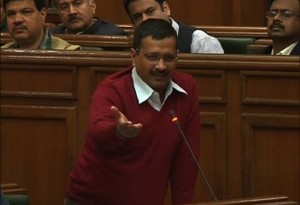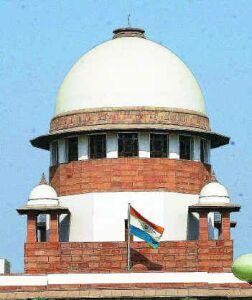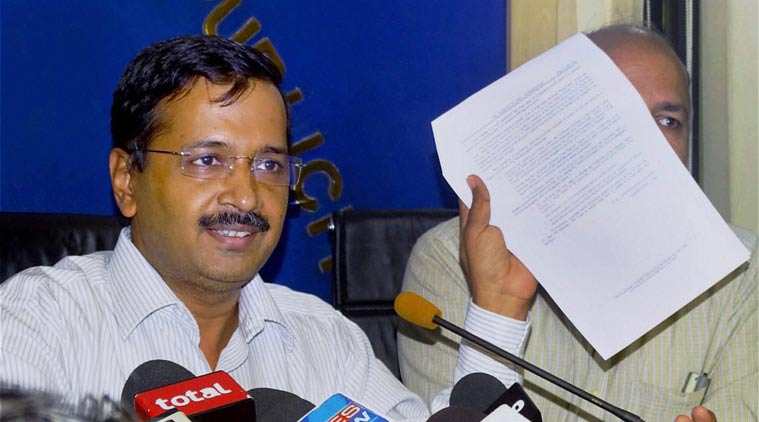A 400% hike in salaries of the members of the Legislative Assembly was recently announced by the Aam Aadmi Party (AAP), Surely, the pseudo-political ascetics at the Aam Aadmi Party have travelled a long way from objecting to basic perks like government vehicles and housing to this brazen expenditure.
To be fair, the yearly increase to the State Government’s coffers would be around 31 lakh rupees, which hardly amounts to a burden on a State with revenue of over 30,000 crores. Further, the because of the hilarious Odd Even Rule, the passing of Jan Lokpal Bill has gone largely unnoticed.
The AAP Government and Mr. Kejriwal, the great RTI activist himself, had not made the draft of the bill public even after clearing it from the Cabinet. This tactic seems to be a far cry from the typical sneering aimed at the Central Government by the party and its supporters regarding the issues concerning ‘intolerance’, freedom of expression and freedom of information itself. Most discussions and rebuttals by the AAP have taken place on the basis of the newspapers reports and one has to limit oneself to those reports when studying the flaws in the Bill.
Federal Perversion
The legislative agenda of the AAP Government especially suffers from a paucity of understanding of the concept of Federalism in the Indian Constitution and especially the special situation of Delhi Assembly within that structure. A federal system of government is one with a division of power between the Centre and State as opposed to a unitary system of governance. The Black’s Law Dictionary defines Federalism as “The legal relationship and distribution of powers between the national and regional governments within a federal system of government”.
In India, several scholars have diverging views on the extent and the nature of federalism in India, but the consensus was largely around terming it “quasi federal” or more recently, co-operative federalism. The Indian system of distribution of powers between the Central Government and the States is one in which each recognizes the powers of the other, while jointly engaging in certain governmental functions. It depends on the three Lists, the Union List, the State List and the Concurrent List provided in the Seventh Schedule of the Constitution. The Union List contains the subjects on which only the Union can legislate, the State List contains the subjects on which only the State can legislate and the Concurrent List contains the subjects on which both the Union and State can legislate, with Union made law prevailing over State made law in case of conflict. Traditionally, the States have the power to legislate in the matters falling under the State as well as the Concurrent List.
On the other hand, Delhi is an “evolving Union Territory with trappings of a State”. Delhi is classified as a Union Territory in Schedule I of the Constitution. Yet it is not governed by Article 239 which covers Union Territories in general, but is covered by the special provision of Article 239AA. Through the sixty ninth Constitutional Amendment, the Parliament in 1991 introduced Article 239AA creating a Legislative Assembly of the NCT of Delhi Stating that the Assembly of State of Delhi –
“shall have power to make laws for the whole or any part of the NCT with respect to any of the matters enumerated in the State List [Except matters with respect to Entries 1 (Public Order), 2 (Police) and 18 (Land)] or in the Concurrent List in so far as any such matter is applicable to Union Territories…”.
Hence, the Delhi Assembly has the powers listed under the State List, except in relation to the issues of Public Order, Police and Land. These exceptions were created with the idea of protecting the National Capital character of the region and to segregate the self-governing Union machinery from the newly formed local machinery. The larger social and democratic argument here is the separation of Dilli, the old North Indian town from New Delhi, the capital of a representative and much larger Indian Union. Capital cities, by their nature, have to bear this situation and invariably the tensions are inherent as seen previously in other capital cities in the World.
The exclusion of the issue regarding Public order, Police and Land was important to protect the Union setup with representatives from various parts of India, and not the more localized democratic unit within the National Capital Territory. The political and administrative design such capital cities must be aimed at creating an unique and intricate balance between local governance of the city/state and the capital’s role as a city representative of the larger Union. The idea is to create a democratic product which would have major powers regarding self governance of local and municipal aspects whilst maintaining the all India character of New Delhi within its governance structure.
The balance of scale in the federal setup of Delhi State Assembly was further tilted towards the Union with the notable exclusion that those entries which are not applicable to the Union Territories will be outside the jurisdiction of the Legislative Assembly of the NCT of Delhi. The assertions of the Delhi Assembly being a “glorified municipality” are a bit over the top but the Delhi Assembly still falls way short of being a full State as there are notable omission of powers available to the Assembly in the federal Constitutional setup as compared to any other State. Understanding the limitations and maximizing the advantages would be the prudent approach by any other State leader in Delhi but expecting anything other than delusional confrontation from the AAP would be juvenile.
 The Jan Lokpal Bill, 2015 provides powers to investigate into the allegations of corruption occurring in the National Capital Territory of Delhi. Further, the absence of the provision limiting the definition a “government servant” to be of the State government cadre, territorialises the jurisdiction of the Lokpal and effectively gives it powers to investigate the Officers in the Central Government.
The Jan Lokpal Bill, 2015 provides powers to investigate into the allegations of corruption occurring in the National Capital Territory of Delhi. Further, the absence of the provision limiting the definition a “government servant” to be of the State government cadre, territorialises the jurisdiction of the Lokpal and effectively gives it powers to investigate the Officers in the Central Government.
Any executive or quasi executive/legal body which is a product of the representative of a local State cannot have jurisdiction over the officers or representatives of the Union. The governing bodies that our democratic system creates function on the cardinal principle of representative democracy, wherein the governing bodies created by the conglomeration of representatives of a particular democratic unit could have power to govern/administer only that democratic unit.
The appointment process and the members of the Selection Committee is intrinsically linked to the powers and functions of the Jan Lokpal. By virtue of the fact that the members of the appointing committee of the Jan Lokpal are representatives of the Constitutional toned-down democratic unit of the State of Delhi, the jurisdiction of the institution so created by these members would be limited by the powers of Delhi Assembly itself.
The jurisdiction of the Delhi Lokpal would be a product or in fact, a subset, of the jurisdiction of powers which the Delhi Assembly and its members command. By expanding this jurisdiction criterion, the AAP aims at a ‘federal perversion’ of the Constitution and in effect appoint an All India Corruption Ombudsman under the power of the local Delhi Assembly which represents merely 1.28% of the Union’s Democratic Unit. If the AAP aims to create a National Ombudsman for Corruption, the system of creating the body, the members of the appointing committee need to be representatives of the Parliament and Supreme Court and not the Delhi Assembly and the Delhi High Court. This situation is ludicrous and constitutionally, laughable. A lawyer, very witty one, exclaimed to me that Mr. Kejriwal might even want to investigate Sepp Blatter and FIFA through Jan Lokpal!
Subordination of Jan Lokpal
Another major point of criticism for the new Bill is the member of the Selection Committee itself. The 2014 Bill provided for a 7 member committee comprising the Chief Minister of Delhi, Leader of Opposition in the Delhi Assembly, 2 judges from the Delhi High Court, 1 person from the previous Chairpersons of Janlokpal and 2 persons amongst retired judges of SC/HC, retired Chief of Army, Navy, Airforce, retired chief secretaries/principal secretaries to the government, retired vice-chancellors, retired CEC/CIC/CAG, retired members of UPSC and retired secretaries to the Government of India.
The 2015 Bill provides for a 4 member committee comprising of the Chief Minister of Delhi, the Leader of Opposition in Assembly, the Speaker of the Legislative Assembly and the Chief Justice of Delhi High Court. Prima facie, the reduction in the members of the Committee clearly points towards the attempt to aggrandize the power.
Further, the inclusion of Speaker in the Selection Committee is particularly important considering the current situation in the Delhi Assembly. Mostly, the appointments of the Lokayuktas in other States take place through a participatory process between the Chief Minister, the Leader of Opposition and the Chief Justice of the High Court. Interestingly, the criticism of AAP’s position on the constitutionally fragile grounds taken by Mr. Prashant Bhushan merely further the anti-politician rhetoric that the new committee has 3 members from the ‘political class’ but the special inclusion of the Speaker as the fourth member enables the Chief Minister’s party to effectively stop the process without their approval.
The appointment to such independent quasi administrative/investigative bodies is to be taken through a participatory consultative process and not through sly number advantages. The consensus over the unimpeachable integrity of the members of the Jan Lokpal has to come equally from all quarters of the democratic setup and not merely from the ruling party. Balance of the power within the appointers/stakeholders is a key concept for any decision making.
People well versed with the art of negotiations and decision making, would appreciate that when the delicate equilibrium of power within the units of tripartite system is titled, it results in a lopsided and tyrannical decision making body. If the appointing committee is unable to select members in a non partisan fashion without unreasonable and unbalanced interference from head of government, the resulting members of the Lokpal may not be able to carry out its functions in a fair manner.
Unsurprisingly, the AAP rebuttal regarding this takes the debate on a completely different tangent. They take cognizance of the Supreme Court ruling on the NJAC case and take a myopic position that “eminent person” was an ambiguous term and open to misuse.
AAP failed to notice that the NJAC Amendment failed to categorically impose any qualifications on the “eminent member” which became the bone of contention whereas, the old Jan Lokpal Bill clarifies the qualifications of such eminent members as “retired judges of SC/HC, retired Chief of Army, Navy, Airforce, retired chief secretaries/principal secretaries to the govt, retired vice-chancellors, retired CEC/CIC/CAG, retired members of UPSC, retired secretaries to the Government of India”.
What the AAP further ignores is that the NJAC judgement’s ratio was on the basis that one ex officio member was from the executive and by virtue of the presence of the member of the executive, the independence of judiciary which is a part of the basic structure would be sabotaged.
Without affirming the otherwise questionable position of the Supreme Court in the judgment, the situation of the Jan Lokpal Bill and its appointees is far different from the appointment of the Judges within the Constitutional setup.
The Judiciary and the Supreme Court are one of the three pillars of our country whereas the Jan Lokpal would merely represent one of the units of the governance within or in between those three pillars. The hilarious irony of this situation is that AAP seeks refuge in a misinformed argument in the NJAC judgment on the Constitution while subverting and bypassing Federalism, one of the features of the ‘basic structure’ of the Constitution. This is a historical achievement as traditionally State Chief Ministers have complained regarding the over interference by the Centre through bodies like the CBI even though the CBI requires permissions for arrest of the State officials, and Kejriwal has technically managed to usurp the powers of the Centre whilst being a Chief Minister!
The unfortunate situation that results from AAP’s Jan Lokpal Bill, which even the supporters of the Anti Corruption Movement understand, is that the Bill creates a weak body to tackle the menace in the State.
Even assuming that the AAP Government is not corrupt by itself, AAP will not stay in power forever and there will be different party in power some time in the future. The Bill creates an imbalance in the power ratio between the appointers and misses a golden opportunity of being the standard bearer legislation which could have prompted pressure on other State Governments to amend their existing Lokayukta laws.
Instead, it has provided the opportunity to the other States to subjugate their existing law which might earlier have been balanced and effective. To further the harm to the discourse, and pander to the anti-central government agenda of the AAP Government, the Jan Lokpal Bill enters into an unnecessary confrontation with the Centre over the issue of jurisdiction.
 The political short sightedness of the AAP Government over the issue might allow them to pander to this rhetoric for a while but the Bill, to the extent of its jurisdictional applicability to the whole territory of Delhi without the exclusion of the Central Government machinery, will most probably be declared unconstitutional by the Supreme Court.
The political short sightedness of the AAP Government over the issue might allow them to pander to this rhetoric for a while but the Bill, to the extent of its jurisdictional applicability to the whole territory of Delhi without the exclusion of the Central Government machinery, will most probably be declared unconstitutional by the Supreme Court.
Pessimism pervades the discourse regarding anti corruption in India. The creation of a weak ombudsman results in a subservient body adhering to the people in positions of power, whereas the prospect of a strong body doesn’t inspire confidence as invariably, and rather than controlling corruption, it would result in merely being another participator getting their ‘cut’ in the process. The saying “power corrupts but absolute power corrupts absolutely” would never sound more true.
The author is an Advocate practicing in the Supreme Court and a graduate of the National Law Institute University.

